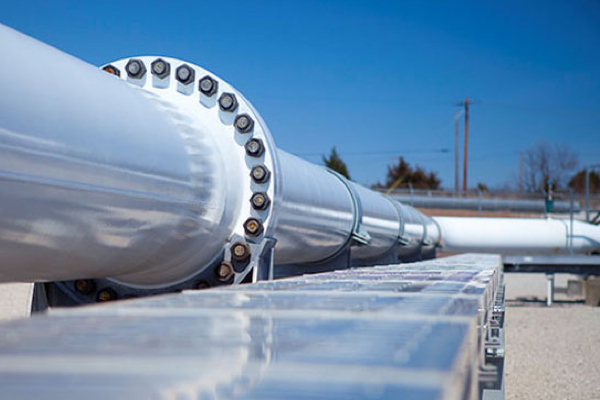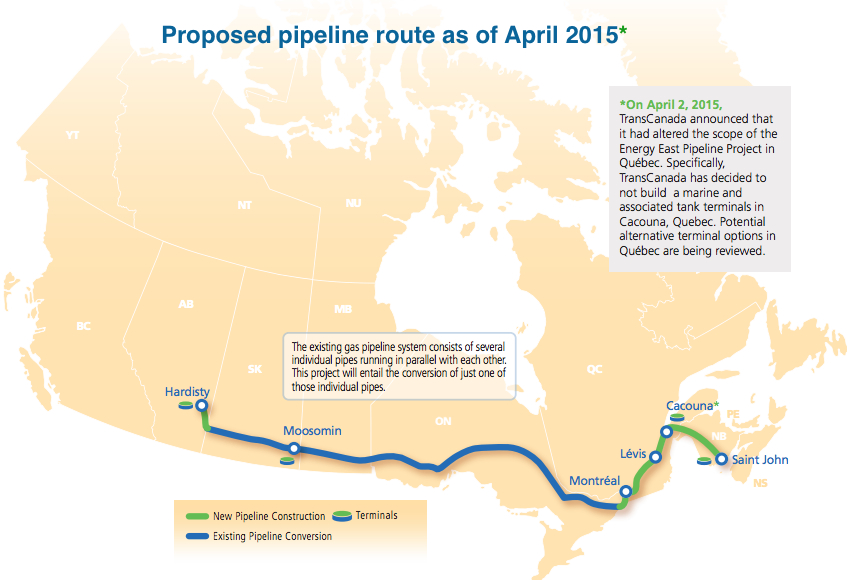Groups ask Gov’t to suspend TransCanada Corp’s Energy East pipeline application

TransCanada wants to convert one of its existing natural-gas pipelines into a 4,600-kilometre oil pipeline — dubbed Energy East — that would carry 1.1 million barrels of crude oil per day from Hardisty, Alberta, to Saint John, New Brunswick.
More than 60 Canadian groups are urging the country’s National Energy Board (NEB) to suspend its review of TransCanada Corp.’s (TSE, NYSE: TRP) application for its planned Cdn$12 billion Energy East pipeline.
The Calgary-based firm has said it would file amendments to its existing application for the $12-billion pipeline in the fourth quarter this year to reflect last month’s decision to abandon a planned marine terminal in Quebec over potential risks to beluga whale habitat.
“The board cannot determine that the application is complete until after the future amendments are added to the record and assessed,” board secretary Sheri Young said in a notice filed with the regulator last week. It has asked for clarification by May 20 “in order to continue its consideration of the application,” according to the notice.
But the organizations want to prevent TransCanada from submitting its reviewed documents and have asked the NEB to keep the case closed until the broken federal regulatory process is fixed,” according to a news release. The groups include the Council of Canadians, David Suzuki Foundation, Greenpeace Canada and the Conservation Council of New Brunswick.
TransCanada’s proposal is to convert one of its existing natural-gas pipelines into a 4,600-kilometre oil pipeline — dubbed Energy East — that would carry 1.1 million barrels of crude oil per day from Hardisty, Alberta, to Saint John, New Brunswick.
The company restated last month that the route will not be finalized until it has assessed and incorporated input from numerous stakeholders, including First Nation and Métis communities, landowners, local communities and provincial and federal governments.
Completion of Energy East is now slated for 2020.
More News
Nornickel believes 2026 will bring dividends, CEO says
Nornickel did not pay full-year dividends for 2022, 2023 and 2024.
December 27, 2025 | 07:42 am
{{ commodity.name }}
{{ post.title }}
{{ post.date }}





3 Comments
Jonson.joe
I’d be happy to see a pipeline built. But it makes no sense that Canada sells raw oil and then imports refined oil products.
Steven Fullerton
I totally agree with Jonson.joe. We should refine our oil and sell finished products, not raw bitumen to China and the USA
patentbs
I would ask the government to suspend the tax free operating status of groups funded by non Canada sources. They get a deduction in the country of origin and want to influence the process here. If Canada were to try that in the USA or Germany we would be facing charges because of declaration and registration rules. Foreigners have foreign interests at heart!